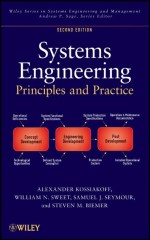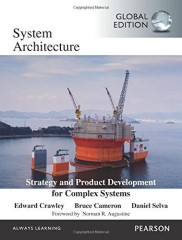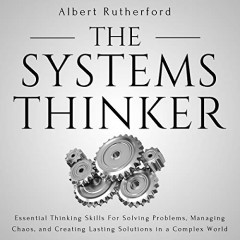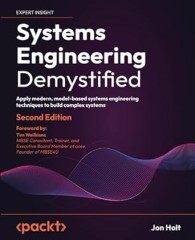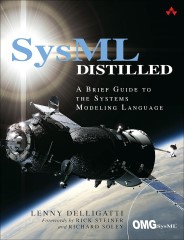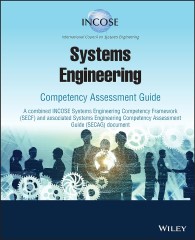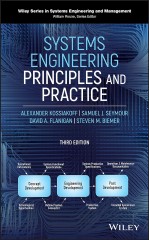In the rapidly evolving domain of engineering, the move towards more systemic and integrated approaches for managing complex projects has heralded the rise of Model-Based Systems Engineering (MBSE). This methodology, promising to revolutionize the way engineers and project managers conceptualize, execute, and monitor their workflows, stands at the cusp of becoming indispensable in the face of ever-increasing project complexity. However, like any transformative approach, its path to ubiquity is strewn with challenges—ranging from integration woes to accessibility barriers—that can dampen its potential impact.
To navigate the intricate landscapes of MBSE, it’s crucial that we start by laying a foundation of understanding. This means illuminating the corners of MBSE that might be shrouded in the mist of technical jargon for those who might not yet have had the opportunity to dive deep into the world of systems engineering. As such, a dedicated effort to clarify and simplify the terminology is not just beneficial but necessary.
In this article, alongside a detailed exposition of the challenges and potential solutions surrounding the implementation of MBSE, we commit to breaking down the barriers of comprehension. A section—or perhaps a sidebar—will be devoted explicitly to demystifying key terms and concepts that are central to MBSE. From the architectural framework of SysML (Systems Modeling Language) that provides the syntax for constructing comprehensive models, to the avant-garde notion of digital twins that serve as the mirror to our physical and virtual engineering feats, we intend to make this narrative accessible and engaging for a general audience.
The goal here is not merely to present a critique or a laudation of MBSE but to invite a broader spectrum of readers into the conversation. By simplifying the language around MBSE, SysML, digital twins, and other related concepts, we aim to broaden the article’s appeal and maximize its accessibility. In doing so, we hope to facilitate a greater understanding and appreciation of the potential that MBSE holds for the future of engineering, making this innovative approach more approachable for professionals across various domains who are poised to benefit from its implementation. Through this lens, we embark on an exploration of the challenges that currently encumber MBSE’s path to becoming a mainstay in engineering disciplines and unravel the multidimensional strategies poised to navigate these challenges effectively.
Table of Contents
- The Silo Effect and Misalignment with Practical Engineering
- 1. Cultural Resistance to MBSE Adoption
- 2. Incompatibility with Established Engineering Workflows
- 3. Divergence in Tool Usage and Preferences
- 4. Limited Accessibility of MBSE Models
- 5. Difficulty Demonstrating Immediate Value to Design and Development Teams
- 6. Disconnect Between MBSE, Digital Engineering Advancements, and IoT in the Build Environment
- So What is The Value and synergies for MBSE and Digital Twins?
- MBSE Challenges and Mitigation Strategies
- 3. Accessibility and Communication Gaps
- MBSE Success Stories
- Wrap Up
1. Integration and Usability Challenges
Integration Woes: MBSE promises a seamless integration of systems engineering processes, yet, in practice, it stumbles due to inadequate compatibility with other engineering tools and platforms. The existing MBSE frameworks struggle to accommodate the varied and specialized software used by different engineering disciplines, leading to fragmentation rather than integration. The inability of MBSE tools to effectively synchronize data across platforms not only compounds the effort required but sometimes necessitates duplication of work, diminishing the methodology’s appeal and practicality.
Usability Barriers: The steep learning curve associated with mastering MBSE tools such as SysML and platforms like Cameo significantly hinders broader adoption among engineering teams. The complexity of these tools and the specialist knowledge required to utilize them effectively can alienate engineers who might otherwise benefit from MBSE principles. This issue is compounded by user interfaces that are not always intuitive, making the initial experiences of new users frustrating and potentially dissuading further engagement.
Top 5 Integration and Usability Challenges
The integration woes identified as hampering the effectiveness and broader adoption of Model-Based Systems Engineering (MBSE) are multifaceted, reflecting both technical and process-oriented challenges. The top five are outlined as follows:
1. Lack of Seamless Tool Interoperability
MBSE tools often fail to integrate smoothly with other software commonly used in engineering processes, such as CAD tools for design, project management software like JIRA, and programming environments. This lack of interoperability forces engineers to manually transfer data between systems, leading to inefficiencies and errors.
2. Data Synchronization Issues
When tools used within an MBSE framework do not support real-time or automated synchronization, data can quickly become outdated or inconsistent across platforms. This fragmentation necessitates manual checks and updates, undermining the MBSE goal of maintaining a single source of truth for project information.
3. High Cost of Integration Solutions
Comprehensive integration solutions that do exist are often prohibitively expensive, especially for smaller teams or projects with limited budgets. This economic barrier can prevent projects from leveraging the full benefits of MBSE, as the cost of creating a fully integrated toolchain can outweigh perceived benefits.
4. Complexity in Customization and Extension
Even when integration is technically feasible, it frequently requires extensive customization or the development of custom extensions/plugins. This complexity can be a significant hurdle, as it demands a high level of technical expertise and resources to ensure tools within the MBSE ecosystem can communicate effectively.
5. Cultural and Methodological Misalignments
Beyond technical challenges, integration woes are exacerbated by cultural and methodological differences across teams and disciplines. Tools optimized for specific engineering domains might not align with MBSE methodologies, creating resistance or difficulty in harmonizing workflows and data standards across an organization. This can limit collaboration and reduce the effectiveness of the systems engineering process.
Recommended Further Reading Amazon BooksThe Silo Effect and Misalignment with Practical Engineering
MBSE is conceptualized as a holistic approach to systems engineering, yet it often ends up operating within informational silos, isolated from the daily workflows and realities of practical engineering. This compartmentalization reduces MBSE to a high-level documentation exercise, perceived by many hands-on engineers as ancillary to the ‘real’ engineering work conducted through more traditional, discipline-specific tools and methods. The abstract, model-centric ethos of MBSE can clash with the concrete, results-oriented focus that characterizes much of engineering practice, leading to its marginalization within projects and organizations.
Given the context provided earlier about the integration woes and practical engagement issues with MBSE, here’s a more specific breakdown of the top five challenges related to The Silo Effect and Misalignment with Practical Engineering:
1. Cultural Resistance to MBSE Adoption
Practitioners may view MBSE as overly theoretical or academic, leading to a lack of buy-in for adopting a model-based approach. This skepticism stems from a disconnect between the high-level, abstract nature of MBSE models and the concrete, tangible outputs valued in practical engineering disciplines. Overcoming this resistance requires demonstrating the direct, practical benefits of MBSE in terms that resonate with engineers’ day-to-day experiences.
2. Incompatibility with Established Engineering Workflows
MBSE often necessitates a shift in how projects are conceptualized and executed, posing challenges to established workflows and practices. Engineers accustomed to certain tools and processes may find it difficult to integrate MBSE models into their routines, leading to MBSE becoming a parallel, underutilized effort rather than an integrated part of the engineering process.
3. Divergence in Tool Usage and Preferences
The specificity of tools used across different engineering disciplines can hinder the full integration of MBSE. For instance, the preference for certain CAD tools in mechanical engineering or specific simulation software in electrical engineering may not align with the capabilities or outputs of MBSE tools like SysML-based platforms. This divergence fosters a siloed environment where collaborative, interdisciplinary insights are lost.
4. Limited Accessibility of MBSE Models
MBSE models, particularly those designed in SysML, may not be easily interpretable by all project stakeholders, limiting their utility as a common point of reference. The specialized nature of SysML notation and the complexity of MBSE tools can alienate non-experts, including some engineers, project managers, and other key personnel, thus reinforcing informational silos.
5. Difficulty Demonstrating Immediate Value to Design and Development Teams
One fundamental misalignment arises from the challenge of demonstrating the immediate, tangible value of MBSE to design and development teams focused on deliverables and timelines. If the benefits of MBSE—such as improved traceability, reduced rework, and enhanced system coherence—are not quickly apparent or impactful within the fast-paced environment of product development, teams may revert to traditional practices, sidelining MBSE efforts.
Addressing these challenges necessitates a concerted strategy focusing on education, cultural change, tool customization, and clear demonstrations of MBSE’s utility in improving project outcomes. Enhanced communication, training programs, and the development or adoption of more intuitive MBSE tools and methods can help bridge the gap between the high-level models of MBSE and the pragmatic needs of engineering practice.

6. Disconnect Between MBSE, Digital Engineering Advancements, and IoT in the Build Environment
As industries rapidly adopt digital engineering advancements and the Internet of Things (IoT) in creating interactive, data-rich build environments, a significant disconnect emerges with MBSE, particularly concerning the utilization of digital twins. Digital twins offer a dynamic, virtual representation of physical systems, enabling real-time monitoring, simulation, and control. However, the potential for these advanced digital constructs to revolutionize product development, lifecycle management, and operational efficiency faces barriers due to a lack of seamless connectivity with MBSE frameworks.
Challenges:
- Integration with Digital Twins: MBSE models are often static representations, with insufficient mechanisms to incorporate or interact with the dynamic, evolving data sets characteristic of digital twins. This disconnect prevents MBSE from fully leveraging the real-time data and predictive insights generated by digital twins, diminishing the potential synergies between conceptual models and their physical counterparts in the digital engineering domain.
- IoT Data Utilization: The IoT generates vast amounts of data from interconnected devices and systems within the build environment. MBSE’s current structures and toolsets struggle to effectively ingest, process, and apply this IoT-generated data, missing opportunities to enhance system models with insights drawn from operational use and environments.
- Adaptable and Scalable Models: The rapid evolution of technologies within digital engineering and IoT demands adaptable and scalable models capable of reflecting changes and updates in real-time. The static nature of many MBSE implementations hinders this adaptability, leading to models that quickly become outdated as the physical system or its digital twin evolves.
Potential Strategies for Addressing the Disconnect:
- Enhancing MBSE Tools for Dynamic Integration: Developing and adopting MBSE tools that allow for dynamic linkage with digital twins and IoT platforms can bridge the existing gap, enabling models to reflect real-time data and changes.
- Expanding MBSE Methodologies: Adapting MBSE methodologies to include considerations for digital twins and IoT data can facilitate a more holistic approach to system development, operation, and lifecycle management. This could involve new notation systems within SysML or other modeling languages specifically designed to capture the dynamics of digital twins and IoT data flows.
- Cross-disciplinary Collaboration and Standards Development: Fostering closer collaboration between systems engineers, digital twin developers, and IoT specialists can spur the development of new standards and best practices that ensure seamless integration. This collaboration can lead to MBSE serving as a central framework that unifies various elements of digital engineering, enhancing system design, validation, and optimization.
Addressing this disconnect is crucial for MBSE to remain relevant and effective in the fast-evolving landscape of digital engineering. Integrating MBSE with digital twins and IoT within the build environment opens new avenues for innovation, efficiency, and performance optimization across various sectors.

So What is The Value and synergies for MBSE and Digital Twins?
This table below illustrates the synergistic value additions that MBSE (Model-Based Systems Engineering) and Digital Engineering with IoT (Internet of Things) bring to the engineering domain. While MBSE lays a solid structural foundation for comprehensively understanding and managing complex systems, Digital Engineering and IoT introduce real-time adaptive capabilities and operational efficiencies by leveraging digital twins and extensive data analysis. Together, these approaches empower organizations to create more effective, efficient, and responsive engineering processes and systems.
| Aspect | MBSE Value Add | Digital Twins |
|---|---|---|
| Integration with Modern Technologies | Facilitates the use of SysML models and system modeling tools, creating a structured framework for complex systems. | Enables real-time monitoring and simulation through digital twins, leveraging IoT data for enhanced operational insights. |
| Efficiency in System Design | Improves project success rates by providing a comprehensive systems engineering approach, reducing design activity costs. | Allows for predictive maintenance and optimization of systems, leading to lower operational costs and higher efficiency. |
| Simulation and Scenario Analysis | Supports “what-if” simulations under the control of systems engineers, using MBSE tools for virtual prototype behavior testing. | Employs operational scenario simulations (agent-based, discrete event) for digital twins, improving decision-making accuracy. |
| Data Utilization and Feedback Loop | Connects MBSE tools to the system lifecycle for continual model refinement and updates based on new information. | Enables a dynamic data exchange between physical objects and their digital counterparts, fostering adaptive systems. |
| Stakeholder Collaboration and Input | Promotes an integrative process involving diverse stakeholder input throughout the systems engineering lifecycle. | Encourages interdisciplinary collaboration by sharing IoT and digital twin insights across project teams and stakeholder groups. |
Dynamic Update Mechanisms
In the era of digital twins and the Internet of Things (IoT), Model-Based Systems Engineering (MBSE) faces the critical challenge of ensuring models remain not only relevant but dynamically aligned with their evolving physical counterparts. This challenge becomes particularly pronounced in large project teams, where siloed operations and conflicting interests often impede the seamless digital workflow vital for the integration of real-time data into MBSE models.
Dealing with Evolving Systems
The Problem with Stagnancy: Traditional MBSE models tend to be static snapshots, offering a detailed view of the system at a specific point in time. However, with digital twins generating continuous streams of operational data and IoT devices providing insights at the edge, MBSE models risk rapid obsolescence unless they can adapt in real-time or near-real-time.
The Need for Dynamic Update Mechanisms: To bridge this gap, MBSE must embrace mechanisms for dynamic updates, enabling models to reflect changes and data from physical systems as they occur. This adaptability ensures models offer continuous value, aiding in predictive maintenance, system optimization, and decision-making processes.
Methodologies and Tools for Dynamic Updates
Several methodologies and tools can facilitate the dynamic integration of MBSE models with digital twins and IoT data:
- Event-Driven Architecture (EDA): Implementing an EDA within MBSE tools can enable models to respond to real-time events or data changes signaled by digital twins or IoT devices. This approach allows models to remain continuously updated, reflecting the current state of the physical system.
- Model Synchronization Platforms: Leveraging platforms that specialize in synchronizing MBSE models with external data sources can streamline the process. These platforms can automate the incorporation of updates from digital twins and IoT, ensuring models are consistently reflective of real-world conditions.
- Version Control Systems with Branching: Adopting version control systems (VCS) that support branching can allow for the parallel development and testing of model updates. This practice enables teams to explore the implications of system changes in a controlled environment before committing them to the primary MBSE model.

Overcoming Organizational and Cultural Barriers
The deployment of dynamic update mechanisms within MBSE confronts significant organizational and cultural barriers, particularly in large project teams where siloed operations predominate. Leadership and a shift in organizational culture are pivotal in addressing these challenges.
- Leadership Commitment: Strong endorsement from leadership is crucial in fostering an organizational culture that values integration, adaptability, and cross-functional collaboration. Leaders must champion the adoption of dynamic MBSE methodologies and allocate resources for the necessary tools and training.
- Breaking Down Silos: Encouraging cross-disciplinary teams and establishing clear channels of communication can help break down the operational silos that stifle innovation. This approach necessitates a shift towards a more collaborative and transparent work environment where the interests of interfacing parties are aligned.
- Continuous Learning and Adaptation: Cultivating a culture of continuous learning and adaptation empowers teams to embrace evolving digital workflows. This includes regular training on new tools and methodologies, alongside workshops that simulate real-world scenarios involving dynamic MBSE integration.
For MBSE to effectively harness the potentials of digital twins and IoT within the modern engineering landscape, it must evolve beyond static modeling to embrace dynamic update mechanisms. This evolution requires not just technological solutions but a fundamental shift in organizational culture and a unanimous commitment from leadership to champion cross-disciplinary collaboration and continuous innovation. By addressing these barriers, MBSE can remain at the forefront of engineering excellence, offering models that are not only reflective of the present but predictive of the future.
MBSE Challenges and Mitigation Strategies
The implementation of Model-Based Systems Engineering (MBSE) within diverse engineering environments often faces significant hurdles due to The Silo Effect and a general misalignment with hands-on engineering practices. These challenges can hinder the integration, acceptance, and ultimate success of MBSE methodologies. Understanding these obstacles and exploring potential mitigations is key to fostering a more inclusive, efficient, and collaborative engineering environment. Below, we delve into six major challenges identified in the realm of MBSE and propose comprehensive mitigation strategies to address each, aiming to bridge gaps between conceptual modeling and practical engineering applications.
| Challenges with The Silo Effect and Misalignment | Potential Mitigations |
|---|---|
| Cultural Resistance to MBSE Adoption | Demonstrate MBSE’s practical benefits through case studies and success stories. Facilitate workshops that allow hands-on experience with MBSE benefits. Involve all levels of staff in MBSE training, emphasizing its relevancy to individual roles. Encourage leadership to actively support and promote MBSE principles. |
| Incompatibility with Established Engineering Workflows | Customize MBSE tools and processes to better fit into existing workflows. Develop intermediate steps or tools that bridge traditional practices to MBSE. Provide integration support to facilitate the seamless exchange of information. Implement incremental adoption strategies to integrate MBSE without disrupting existing processes. |
| Divergence in Tool Usage and Preferences | Adopt MBSE tools that offer extensive customization and plugin support for integration. Invest in middleware solutions that connect disparate tools effectively. Create cross-functional teams to ensure tools meet the needs of all departments. Encourage tool vendors to consider and incorporate feedback from a broad user base. |
| Limited Accessibility of MBSE Models | Utilize visual aids and simplified interfaces to make MBSE models more accessible. Provide training on interpreting MBSE models for non-experts. Develop summary views or dashboards that present key model insights in an easy-to-understand format. Encourage the use of collaborative platforms for model review and discussion. |
| Difficulty Demonstrating Immediate Value to Design and Development Teams | Identify and highlight quick wins that show the immediate impact of MBSE on projects. Align MBSE initiatives with specific project goals that are important to design and development teams. Create metrics and key performance indicators (KPIs) to measure and communicate the benefits of MBSE. Involve design and development teams in the MBSE implementation process to ensure their needs are met. |
| Disconnect Between MBSE, Digital Engineering Advancements, and IoT | Invest in research and development efforts to integrate MBSE with digital twins and IoT seamlessly. Facilitate partnerships between MBSE tool providers and digital engineering technology firms. Conduct pilot projects to explore and refine the integration of MBSE with digital twins and IoT. Develop new or enhance existing MBSE methodologies to incorporate real-time data and feedback from digital twins and IoT devices. |
This table of challenges and mitigation strategies related to overcoming The Silo Effect and misalignment in MBSE. It sets the stage for a detailed discussion on the identified issues and proposed solutions, underscoring the importance of addressing these barriers for the successful adoption and implementation of MBSE in engineering projects.
The Need for More Visualizations
In the complex tapestry of modern systems engineering, the visualization of architecture emerges not just as a methodology, but as a fundamental prerequisite for clarity, cohesion, and effective communication. The idea of crafting a visual architecture, a concept that champions the integration of engineering artifacts into a coherent and comprehensible whole, transcends mere aspiration to become an indispensable facet of Model-Based Systems Engineering (MBSE).
This endeavor to realize seamlessly integrated systems engineering artifacts underscores the relentless pursuit of an operational harmony where changes in one segment intuitively ripple across the entire system. Despite the myriad challenges that accompany the evolution of engineering practices, the relevance of this vision remains undiminished.
It stands as a testament to the enduring necessity for methodologies that encapsulate not just the precision of engineering but also the lucidity of design, ensuring that every stakeholder, regardless of their technical depth, can navigate the intricacies of sophisticated systems with unparalleled insight.
3. Accessibility and Communication Gaps
As Model-Based Systems Engineering (MBSE) evolves, it confronts significant hurdles in accessibility and communication, which, if unaddressed, can gravely impact its potential to streamline and enhance systems engineering processes. These gaps can be attributed to the complex nature of modeling languages such as SysML, the technical limitations of MBSE tools, and the broader cultural context within which these tools and methodologies are deployed.
Bridging the Language Gap
The primary notation used within MBSE, SysML, boasts robust capabilities for detailed system modeling. However, its complexity and specialized nature pose significant barriers to broader team engagement. For MBSE to fulfill its role as a facilitator of cross-disciplinary collaboration, it is crucial to develop more accessible language or layers of interaction with these models that can be understood by non-experts. Accessibility improvements might include simplified interfaces for SysML tools or the development of intermediary software that can translate SysML notation into more intuitive, graphical representations that retain the essence of the model without requiring deep technical understanding of the underlying language.
Enhancing Tool Usability
MBSE tools often feature steep learning curves, not only due to the complex nature of SysML but also because of user interface designs that are not always intuitive. To address this, tool developers should prioritize user experience in their design processes, aiming to make MBSE software as approachable as standard office applications. This could involve leveraging common design patterns familiar to most software users and incorporating more guided workflows that help new users understand how to achieve their objectives within the tool.
Fostering Organizational Culture Change
Beyond tool and language accessibility, there’s a need for a cultural shift within organizations to embrace MBSE fully. This shift includes recognizing and addressing the ‘silo mentality’ that can pervade large projects or companies. Efforts should be made to underscore the value of MBSE in facilitating better communication and collaboration across different departments and specializations. Part of this cultural shift involves leadership endorsement and the championing of MBSE methodologies as a means to enhance project outcomes, emphasizing the practical benefits of these approaches.
Education and Training for Broader Adoption
The promotion of education and training initiatives that specifically target the accessibility and communication benefits of MBSE is crucial. Tailored training programs can demystify MBSE for non-specialists, highlighting how these methodologies can streamline their work and enhance project outcomes. Such programs should focus not only on the technical aspects of MBSE and its tools but also on the collaborative and communicative advantages it offers, providing clear, concrete examples of its impact on project efficiency and success.
Continuous Evaluation and Feedback Mechanisms
An ongoing challenge in addressing accessibility and communication gaps is the evolving nature of project requirements and technological capabilities. Establishing mechanisms for continuous evaluation and feedback on the use of MBSE tools and methodologies can help identify persistent gaps and emerging needs. This iterative approach ensures that MBSE evolves in tandem with the needs of its users, fostering an environment of continuous improvement that can adapt to new challenges and opportunities.\
The promise of MBSE to revolutionize systems engineering is contingent upon addressing the significant accessibility and communication gaps currently encountered. By developing more intuitive modeling languages, enhancing tool usability, fostering an organizational culture that values cross-disciplinary collaboration, and promoting targeted education and training initiatives, MBSE can achieve its full potential. Such concerted efforts will not only improve the accessibility of MBSE but also ensure it serves as a true catalyst for innovation and efficiency in systems engineering practices.
MBSE Success Stories
Incorporating real-world examples and case studies into article sections like “Integration and Usability Challenges” and “The Silo Effect and Misalignment with Practical Engineering” can vastly enhance the narrative’s depth, offering practical insights and proven strategies. Below, illustrative examples and case studies are outlined to complement the respective challenges and solutions discussed in the article.

Integration and Usability Challenges: Aerospace Industry’s Integration Triumph
Challenge: A leading aerospace company faced significant hurdles in integrating MBSE with existing CAD tools and simulation software, leading to inefficient data transfer and process fragmentation.
Solution: The organization developed a middleware solution that acted as an integration layer between MBSE tools and legacy systems. This middleware not only facilitated seamless data exchange but also allowed for the synchronization of changes across systems in real-time.
Outcome: The introduction of middleware significantly reduced manual data entry, minimized errors, and expedited the design process. The company reported a 25% improvement in project timelines for their next aircraft design project, demonstrating the tangible benefits of effective tool integration within MBSE frameworks.
The Silo Effect and Misalignment with Practical Engineering: Automotive Sector’s Shift in Organizational Culture
Challenge: An automotive manufacturer struggled with the silo effect, where MBSE was regarded as a theoretical exercise detached from the practical needs of engineering teams.
Solution: The company initiated a series of cross-functional workshops designed to align MBSE models with hands-on engineering practices. These workshops facilitated open dialogues between system modelers and engineers, focusing on how MBSE can address real-world design challenges.
Outcome: Bridging the gap between theory and practice led to the wider acceptance and application of MBSE across engineering teams. Development cycles became more cohesive, with a notable reduction in rework and increased innovation in design solutions.
Disconnect Between MBSE, Digital Engineering, and IoT: Energy Sector’s Digital Twin Integration
Challenge: A global energy firm faced difficulties in linking MBSE models with the dynamic data generated by digital twins in their wind farms, hindering predictive maintenance and operational optimization.
Solution: The firm collaborated with MBSE tool providers to enhance their systems with capabilities to dynamically connect with digital twins, allowing models to be continuously updated with real-time operational data.
Outcome: This direct link between MBSE models and digital twins revolutionized the firm’s approach to maintenance, leading to a 30% reduction in downtime and a significant increase in energy production efficiency. The case exemplifies how overcoming connectivity issues can unleash the full potential of MBSE in conjunction with digital engineering advancements.
These examples underscore the impact of thoughtfully addressing integration, usability challenges, and the silo effect within MBSE practices. By showcasing successful mitigations from various industries, these case studies offer valuable lessons and inspiration for organizations embarking on their MBSE journey. They stand as a testament to the transformative potential of MBSE when effectively integrated into practical engineering environments, paving the way for its broader adoption and application across diverse sectors.
Recommended Further Reading Amazon BooksWrap Up
In the realm of modern engineering, the quest for seamless integration and the aspiration to bridge the chasm between visionary models and tangible realities takes center stage. The journey of Model-Based Systems Engineering (MBSE) epitomizes this pursuit. “The Great Divide: When MBSE Promises Meet Engineering Realities” delves deep into this journey, unraveling the complexities and challenges that lie in harmonizing lofty MBSE aspirations with the gritty truths of engineering workflows. As we navigate through the enigmatic landscapes of MBSE, our exploration transcends mere critique to offer a beacon of understanding and actionable strategies.
At the heart of this narrative lies a commitment to demystify the intricate world of MBSE, making it accessible and engaging for a broader audience. By clarifying terms such as SysML, digital twins, and the mechanisms of MBSE, the conversation opens up, inviting professionals from various domains to partake in a dialogue about the future of engineering. This is more than an examination of MBSE’s potential; it’s a call to embrace the synergy between conceptual modeling and practical application, thereby enhancing the efficacy and efficiency of engineering practices.
As our exploration unfolds, we encounter tangible challenges—integration woes that hamper MBSE’s effectiveness and a silo effect that misaligns with practical engineering needs. Yet, through real-world examples and case studies, we uncover strategies that promise to surmount these hurdles. From the aerospace industry’s triumph in middleware integration to the automotive sector’s cultural realignment, these narratives offer a glimpse into the transformative potential of MBSE when thoughtfully implemented.
The discourse further ventures into the realm of digital twins and IoT, spotlighting a disconnect that, if bridged, could unlock unparalleled innovation and performance optimization across sectors. Dynamic update mechanisms emerge as a pivotal strategy, advocating for MBSE models that adapt in real-time, mirroring the evolving landscapes they represent. However, conquering this frontier demands more than technological solutions; it requires an organizational culture shift, championed by leadership committed to fostering cross-disciplinary collaboration and continuous innovation.
“The Great Divide: When MBSE Promises Meet Engineering Realities” encapsulates a journey—a quest for harmony between visionary models and engineering realities. It’s an invitation to the engineering community to not only navigate but also shape the future landscapes of MBSE. By addressing the challenges head-on and leveraging the synergies between MBSE and digital engineering advancements, we stand on the cusp of a revolution. A revolution that promises a future where MBSE is not just a theoretical exercise but a cornerstone of engineering excellence, driving innovation, efficiency, and success in an ever-complex world.
Read our article on Unlocking MBSE: Choosing the Best Books for Model-Based Systems Engineering.


